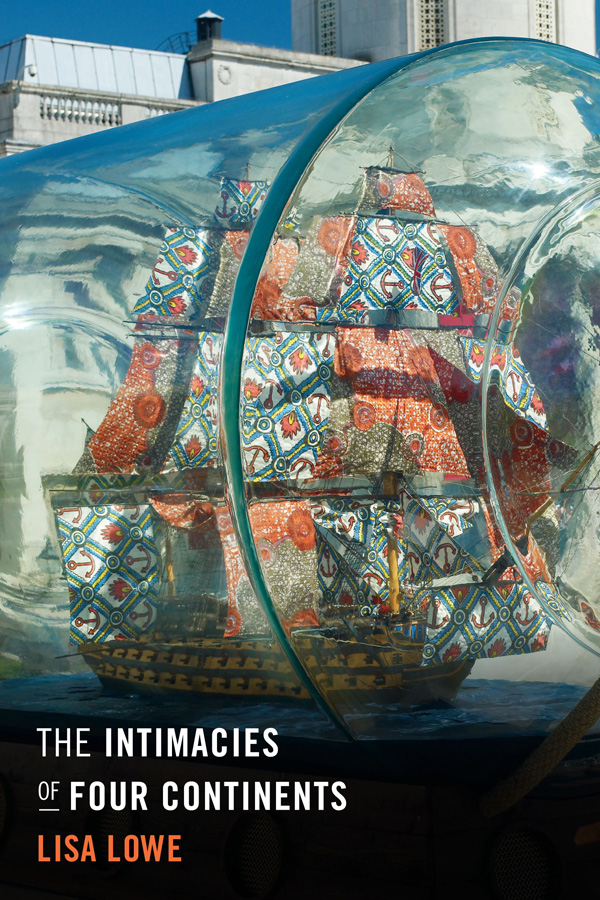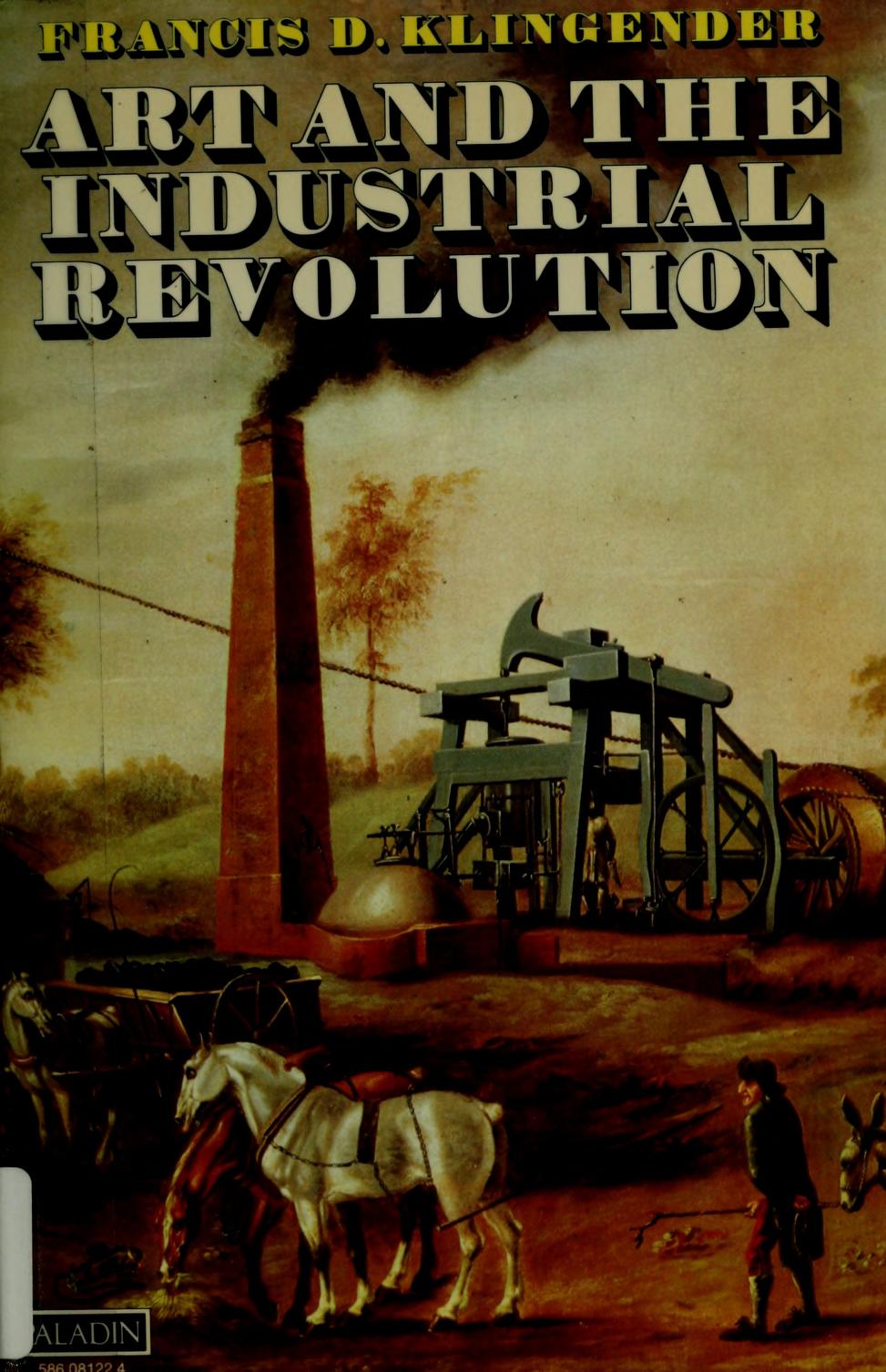Lisa Lowe: The Intimacies of Four Continents (2015)
Filed under book | Tags: · 1700s, 1800s, abolitionism, asia, black people, capitalism, colonialism, dialectic, governance, history, imperialism, indigenous peoples, intimacy, knowledge, labour, liberalism, marxism, narrative, race, slavery, trade, united states, violence

“In this uniquely interdisciplinary work, Lisa Lowe examines the relationships between Europe, Africa, Asia, and the Americas in the late eighteenth- and early nineteenth- centuries, exploring the links between colonialism, slavery, imperial trades and Western liberalism. Reading across archives, canons, and continents, Lowe connects the liberal narrative of freedom overcoming slavery to the expansion of Anglo-American empire, observing that abstract promises of freedom often obscure their embeddedness within colonial conditions. Race and social difference, Lowe contends, are enduring remainders of colonial processes through which “the human” is universalized and “freed” by liberal forms, while the peoples who create the conditions of possibility for that freedom are assimilated or forgotten. Analyzing the archive of liberalism alongside the colonial state archives from which it has been separated, Lowe offers new methods for interpreting the past, examining events well documented in archives, and those matters absent, whether actively suppressed or merely deemed insignificant. Lowe invents a mode of reading intimately, which defies accepted national boundaries and disrupts given chronologies, complicating our conceptions of history, politics, economics, and culture, and ultimately, knowledge itself.”
Publisher Duke University Press, Durham, NC, June 2015
ISBN 9780822358633, 0822358638
319 pages
Discussion: Gayatri Gopinath, Alyosha Goldstein, Moon-Ho Jung, Stephanie Smallwood (book roundtable at ASA Conference, Toronto, 2015, video).
Reviews: John Holmwood (Theory, Culture & Society, 2016), Betty Joseph (American Historical Review, 2016), Hossein Ayazi (Qui Parle, 2016), Michael Gaffney (Journal of American Studies, 2016), Adam Nemmers (Women’s Studies, 2016), Marion C. Rohrleitner (Pacific Historical Review, 2016), Lance Bertelsen (Modern Philology, 2017), Harrod J Suarez (Melus: Multi-Ethnic Literature of the U.S., 2017), Jesse van Amelsvoort (Nexus Instituut, n.d.), Hadley Howes (Antipode, 2020).
Francis D. Klingender: Art and the Industrial Revolution (1947–) [EN, IT, ES]
Filed under book | Tags: · 1800s, aesthetics, art history, history of literature, history of technology, industrial revolution, industry, labour, marxism, poetry, technology

A classic of Marxist art history.
“Drawing on his unique command of the contemporary visual and literary record, Francis Klingender analyzes and documents the inter-reaction between the sociological, scientific and cultural changes that moulded the 19th century. His subjects range from the development of the railways to the poetry of Erasmus Darwin, from the construction of bridges and aqueducts to the aesthetic concepts of the Sublime and the Pictoresque, from the Luddite riots and the English ‘navvy’ to those artists most profoundly affected by the climate of the Industrial Revolution, among them John Martin, Joseph Wright of Derby, J.C. Bourne, and J.M.W. Turner.” (from back cover)
Publisher N. Carrington, London, 1947
Edited and revised by Arthur Elton
Revised and expanded edition by Adams & Dart, 1968
Publisher Paladin, St Albans, 1972
ISBN 0586081224, 9780586081228
xv+272 pages
Review: Fred H. Andrews (J Royal Society of Arts, 1949).
Art and the Industrial Revolution (English, 1947/1968, 60 MB, no OCR)
Arte e rivoluzione industriale (Italian, trans. Elena Einaudi, 1972)
Arte y revolución industrial (Spanish, trans. Pilar Salso, 1983)
Kaja Silverman: The Miracle of Analogy, or, The History of Photography, 1 (2015)
Filed under book | Tags: · 1800s, analogy, history of photography, philosophy, photography, theory

“The Miracle of Analogy is the first of a two-volume reconceptualization of photography. It argues that photography originates in what is seen, rather than in the human eye or the camera lens, and that it is the world’s primary way of revealing itself to us. Neither an index, representation, nor copy, as conventional studies would have it, the photographic image is an analogy. This principle obtains at every level of its being: a photograph analogizes its referent, the negative from which it is generated, every other print that is struck from that negative, and all of its digital “offspring.”
Photography is also unstoppably developmental, both at the level of the individual image and of medium. The photograph moves through time, in search of other “kin,” some of which may be visual, but others of which may be literary, architectural, philosophical, or literary. Finally, photography develops with us, and in response to us. It assumes historically legible forms, but when we divest them of their saving power, as we always seem to do, it goes elsewhere.
The present volume focuses on the nineteenth century and some of its contemporary progeny. It begins with the camera obscura, which morphed into chemical photography and lives on in digital form, and ends with Walter Benjamin. Key figures discussed along the way include Nicéphore Niépce, Louis Daguerre, William Fox-Talbot, Jeff Wall, and Joan Fontcuberta.”
Publisher Stanford University Press, 2015
ISBN 9780804794008
203 pages
Reviews: Todd Cronan (Nonsite 2014), Emily Una Weirich (ARLIS/NA 2015), Burke Hilsabeck (Critical Inquiry 2015).
Comments (2)
